Of Truth and Justice
Martin Hieronymus Hudtwalcker, Senator of Hamburg from 1820 to 1860, was born in Hamburg on 15 September 1787. His parents were Nicolaus Hudtwalcker (1757-1832) and Charlotte Amalie née Ohlmann (1767-1842).
From 1793 to 1801, whilst still a young man, Martin Hieronymus received the early stages of education in the house, and home, of his uncle Christian Martin Hudtwalcker. Christian Martin H. was a provost and preacher in the county of Holstein. During this early period, the basis for his bond of friendship to Wolf, the Earl of Baudissin, a well-known poet and translator, was formed. In 1801 Martin Hieronymus followed his uncle to Copenhagen, where the latter was called to become a preacher for the German community. In Copenhagen he attended the local Latin school until the summer of 1803, when he returned to back Germany. From autumn of 1803 until spring of 1805, he studied at the Selecta of the Gotha Gymnasium, where Döring and Jacobs were his teachers. Here he found a friend in fellow student in Franz Paffow. Paffow was to become a renowned philologist. In order to recuperate from a severe illness, he spent the summer of 1805 with his parents and in the autumn started his studies at the University of Heidelberg.
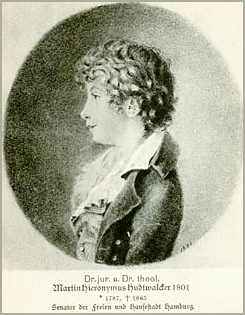
In Heidelberg Martin Hieronymus formed a close relationship with Professor Heise, who later became President of the High Court of Appeal of the City of Lübeck. Martin Hieronymus also frequented the house of the poet J.H. Voss. In the spring of 1807 he went to Göttingen where he continued his legal studies together with his close friend, the Earl of Baudissin. The two friends returned together to Heidelberg in 1808. Joined by Kohlrausch, a philologist later known as a teacher and historical writer on the wars of liberation, they spent the autumn vacation that year by hiking through Switzerland and to Lake Maggiore. On 16 February 1809, Martin Hieronymus laudably passed his legal doctorate exam. In the final year at the university, he befriended the future criminologist Mittermaier, with who he remained in close touch with for the rest of his life. Having completed his studies, Martin Hieronymus left Heidelberg and set out on a several month long journey through various parts of Germany. During his travel he met Jean Paul in Bayreuth, and Wieland and Goethe in Jena. Staying for one month in Jena, he met Goethe frequently when visiting the Fromm family, of which Minchen Herzlieb was a member. In the same circle he also got to know Werner, the poet of Söhne des Thales, and J. D. Gries, the translator of Tasso. From Jena he travelled to Leipzig, Dresden and Berlin, where he visited Fichte and Nicolai. Finally, at the end of September 1809, time had come to visit his home town, Hamburg. Hamburg had been occupied by French troops soon after the Battle of Jena and had only recently regained its former independence. After he had qualified as an advocate, Martin Hieronymus was initially busy with the printing and publishing of his dissertation, but soon his legal activities in Hamburg began to develop successfully. But in the last days of 1810, Hamburg was incorporated into the French Empire by Napoleon’s decree. Martin Hieronymus was unable to submit in silence to what he regarded as a catastrophe. Thus, hoping for better times, in September 1811, he left Hamburg once again and moved to Austria.
Arriving in Vienna on 7 October 1811, Martin Hieronymus spent 1812 in various libraries where he worked on a legal essay broaching the subject of the arbitrators in Athens. The essay was published in print and was greatly acclaimed. Besides being engaged in diverse literary works, he spent the time with Friedrich Schlegel and Theodor Körner. However, the political landscape in Germany was about to undergo further dramatic changes. The fall of the French army in Russia in December 1812, followed by the rise of Prussia early in 1818, revived the hopes of the German patriot. In light of his state of health Martin Hieronymus found it impossible to take up arms for his native country. He travelled to Bohemia in May 1818, but all attempts to win a position in which he could somehow employ his skills for the benefit of his native country were in vain. In July 1818 he returned to Vienna. Here he soon adopted the task of accompanying the two oldest sons of the Earl of Stadion, who then – apart from Metternich – had an excellent influence on the management of public affairs, to the University of Tübingen. With several interruptions caused by the events of war, and mainly busy with historical research, he remained in Tübingen until September 1814. After a short stay in Vienna during the period of Congress, he later that autumn accompanied the young Earls of Stadion to Göttingen. When this relationship dissolved in early 1815, Martin Hieronymus decided to return to Hamburg.
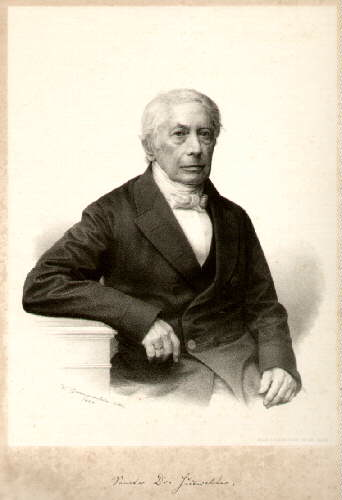
Back in Hamburg, the legal activities were fervently continued with great success. Soon he counted as one the city’s busiest lawyers. On 20 December 1817 he married Charlotte von Mengershausen from Göttingen. They couple had first met in Göttingen in 1814. On 29 March 1820 he was elected as Member of the Hamburg Senate. According to the regulations of the city’s constitution, he could only evade this nomination by emigrating. Wanting to continue his legal activities, he reluctantly decided to accept. An attempt to occupy himself fully as a judge by accepting the position as a councilor in 1820 in Lübeck, at the Supreme Appeal Court of the Free Cities of Germany, failed in 1821 as the Hamburg Senate refused to dismiss him from its midst. So he remained in this position for a period of forty years, untiringly active in the most varied sectors of the communal home town administration. Especially in the administration of the police, under his management from 1883 to 1893, where he had already acted as interim chief in 1831 at the time of civilian unrest and at the first appearance of cholera, he developed a restless prudence and energy which found general recognition in all circles. He also proved himself as Chairman of the Commission called together to consult on a radical change of criminal procedures and to develop a Hamburgian criminal code.
During the days of the Great Fire in May 1842, he was involved in the extraordinary police commission introduced by the Senate. Martin Hieronymus was also a member of the reform deputation ordered with the preparation of constitutional changes in 1848. He initiated the reform of the academic gymnasium in 1828, and was for a number of years Chairman of the Supreme School Board, the “Scholarchattz”. He was already a member of the Supreme Court since 1821, formed by a section of the Senate, and was its Presidents during the last years of his official activities. The most vaunted of his legislative works which deserves distinction, apart from the ones regarding the restructure of criminal law, was the “wardship regulation”, brought to life in 1831. No less proficient were his actions aligned to the regulation of civil rights, the decree on civil rights and on servants of the year 1833, as well as those on the right of residence and on “Schutzverwandschft” (a type of protective residence permit) of 1837. Martin Hieronymus had been active in processing a press law during the third decennium of the century, while it only came to be after the abolishment of censorship in 1848.
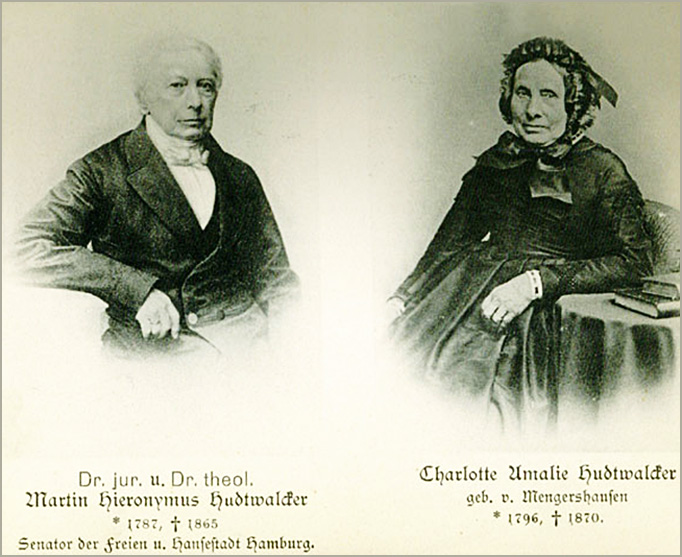
An incredible energy enabled him to find the necessary leisure for literary work despite his time-consuming and strenuous official activities. In 1823, he and Dr. C. Trummer started publishing the Criminalistic Contributions, a magazine most favourably assessed by scientific circles. He published memories of his own life, somehow vaguely disguised in a novel, in 1826 under the title Bruchstücke aus Karl Berthold’s Tagebuch (16). In various small brochures he revealed his interest in home town matters and cooperated in various scientific magazines. Soon after his entry into public life, he also developed excellent work in the religious field, initially by his attack against the rationalistic direction, which was predominant not only in the pulpit but also among the population. Those not counted among his kindred spirits soon got to know him as an always ready and quick-witted opponent, whose mental skill and scientific education they had to recognize just as they did his moral integrity. In no way hostile towards unbelievers, he worked for the establishment of the English Reformed, the English Episcopal and later even the Baptist community. In 1833, he was also one of the founders of a safe house for neglected children, which became known far beyond the walls of Hamburg as the “Rauhe Haus” [Rough House]. He actively participated in the missionary community, the “Magdalenenstift”, the association for released prisoners and other similar institutions, as well as being President of the Hamburg-Altona bible community until he died. On the occasion of his doctorate anniversary on 16 February 1859 he was awarded the honour of a doctorate of theology by the University of Berlin.As the new Hamburgian Constitution was brought to life after more than 12 years of preparation, he withdrew from public life with consideration to his old age and his weakened state of health. During his well-earned retirement he occupied himself with written works and the collection of biographical notes, until he seized by a lethal illness in 1865, which brought his earthly life to an end on 16 August of the same year. An index of his writings can be found in the Hamburgian Author’s Lexicon Volume III S. 395–398.
Parents
Nicolaus Hudtwalcker (3 May – 25 January 1832)
Charlotte Amalie née Ohmann (6 September 1767 – 2 March 1842)
Spouse
Charlotte Amalie née von Mengershausen (27 May 1796 in Göttingen – 5 September 1870 Hamburg).
Children
Marie Charlotte Hudtwalcker (16 September 1818)
Eduard Nicolaus Hudtwalcker (14 April 1820 – 15 March 1821)
Ida AmalieHudtwalcker (2 January 1822 – 10 November 1871)
Auguste Caroline Hudtwalcker (28 February 1824)
Julie Nicoline Hudtwalcker (18 December 1825)
Adelheid Dorothea Hudtwalcker (4 May 1828 – 19 April 1829)
Johannes Nicolaus Hudtwalcker (5 April 1830 – 27 September 1873)
Martin Carl Robert Hudtwalcker (12 October 1832 – 4 April 1834)
Johannes Friedrich Hudtwalcker (22 July 1834 – 29 December 1863)
Carl Bernhard Hudtwalcker (29 April 1836 – 1902 Hannover)
Charlotte Amalie Friederike Hudtwalcker (6 March 1838)
Johanna Elisabeth Hudtwalcker (7 September 1839)
Siblings
Charlotte Amalie Hudtwalcker (6 October 1789 – 15 December 1864)
Nicolaus Hudtwalcker (10 March 1791 – 26 February 1863)
Victorine Antonie Hudtwalcker (26 June 1795 – 26 February 1858)
Luise Conradine Hudtwalcker (19 June 1797 – 12 March 1873, Meran)
Susette Hudtwalcker (18 January 1800 – 12 May 1883)
Appendix
Johann Wolfgang von Goethe (28 August 1749 – 22 March 1832) was a German writer and polymath. Goethe is considered the supreme genius of modern German literature side by side with Schiller. Goethe’s works span the fields of poetry, drama, literature, philosophy, and science. His Faust has been called the greatest long poem of modern European literature. Goethe’s other well-known literary works include his numerous poems, the Bildungsroman Wilhelm Meister’s Apprenticeship, and the epistolary novel The Sorrows of Young Werther.
Goethe was one of the key figures of German literature and the movement of Weimar Classicism in the late 18th and early 19th centuries; this movement coincides with Enlightenment, Sentimentality (Empfindsamkeit), Sturm und Drang and Romanticism. The author of the scientific text Theory of Colours, his influential ideas on plant and animal morphology and homology were extended and developed by 19th century naturalists. He also served at length as the Privy Councilor of the duchy of Saxe-Weimar.
In politics Goethe was conservative. At the time of the French Revolution, he thought the enthusiasm of the students and professors to be a perversion of their energy and remained skeptical of the ability of the masses to govern. Likewise, he “did not oppose the War of Liberation waged by the German states against Napoleon, but remained aloof from the patriotic efforts to unite the various parts of Germany into one nation; he advocated instead the maintenance of small principalities ruled by benevolent despots.”
Goethe’s influence spread across Europe, and for the next century his works were a major source of inspiration in music, drama, poetry and philosophy. Early in his career, however, he wondered whether painting might be his true vocation. Late in his life, he expressed the expectation that he would ultimately be remembered above all for his work on colours.
Theory of Colours (original German title, Zur Farbenlehre) was published in 1810. It contains some of the earliest published descriptions of phenomena such as coloured shadows, refraction, and chromatic aberration.
Its influence extends primarily to the art world, especially among the Pre-Raphaelites. J.M.W. Turner studied it comprehensively, and referenced it in the titles of several paintings (Bockemuhl, 1991). Wassily Kandinsky considered Goethe’s theory “one of the most important works.”
Although Goethe’s work was never well received by physicists, a number of philosophers and physicists have been known to have concerned themselves with it, including Arthur Schopenhauer, Kurt Gödel, Werner Heisenberg, Ludwig Wittgenstein, and Hermann von Helmholtz. Mitchell Feigenbaum had even said, ‘Goethe had been right about colour!’ (Ribe & Steinle, 2002).
In his book, Goethe provides a general exposition of how colour is perceived in a variety of circumstances, and considers Isaac Newton’s observations to be special cases. Goethe’s concern was not so much with the analytic measurement of colour phenomenon, as with the qualities of how phenomena are perceived. Science has come to understand the distinction between the optical spectrum, as observed by Newton, and the phenomenon of human colour perception as presented by Goethe – a subject analyzed at length by Wittgenstein in his exegesis of Goethe in Remarks on Colour.
Comments to the above note on Goethe’s Zur Farbenlehre: “My Farbenlehre is as old as the world, and can by time not be denied and put aside.” – Goethe, 18 March 1831.

To call Goethe’s studies on the nature of colours for a theory (as in Theory of Colours) can be misguiding. Goethe’s work on colours is anything but a theory. Goethe never theorizes. One of Goethe’s main arguments against Newton, was that light is one and indivisible, and not made up by the colours. Nature, and light, must be studied as they are, without any pre-attempts or arrangements to make them comply with a theory. Goethe observes the phenomena, and then engages in active research by methodically performing one practical study after another. The purpose of his method is not to prove a theory or to make a specific point, but to unveil the mystery of nature. This can only be achieved through keen and methodical observations letting the phenomenon reveal itself. A more appropriate translation of the German Zur Farbenlehre would thus be The Scientific Study of Colour.
Goethe’s approach to natural science is no different from his approach to all other aspects of life; art, literature, people, books, etc. But while one for instance read his Faust with interest, one would never actually believe that the character of Mephistofeles indeed portrays a part of reality. However, Goethe’s methods of observation, or approach to the world’s manifold phenomena is no different when writing Faust to later in life studying colours. The Faustian strive is the drive of the modern mind to conquer reality and discover the world’s innermost truth. Faust’s quest, set forth in the Night scene of Faust, First Part, is to know the reality that underlies his phenomenal experience:
That I may detect the innermost force
Which binds the world, and guides its course
But even when Faust is guided and helped by Mephistofeles, there always remains something “beyond”. As the character of Homunculus in Goethe’s Faust, Second Part, Faust is locked inside a glass bubble, albeit a mental one, made of opinions and theories. Faust, the image of modern man, is unable to grasp the essence of reality, because:
Everything transitory is only a parable
– Goethe; Faust, Second Part: Chorus Mysticus
In the foreword to Zur Farbenlehre, Goethe’s writes:
“All one needs to know is accessible to our senses. Attention is everything.”
Goethe’s world is not a world of abstractions, but of the phenomena of life’s forms. Life is science and science is life. It’s all in the eyes of the beholder. Or, as Werner Heisenberg said in a speech in 1967:
“When Goethe can see the ideas with his eyes, then it is surely a different pair of eyes than what is common today. In any case could these eyes not be replaced by a microscope or a photographic slab.”
Theories force their ideas on nature. But to the attentive, nature is nowhere dead or silent. It speaks through thousand appearances:
“Colours are the deeds and sufferings of light.”
– Goethe; Zur Farbenlehre, Foreword
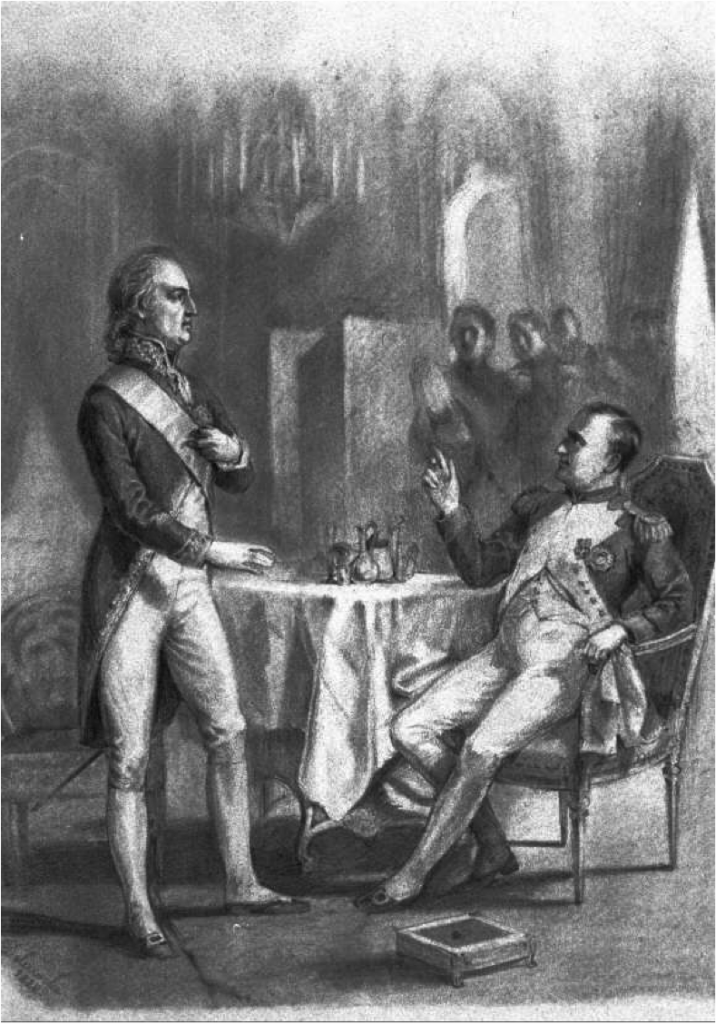
On October 2, 1808, Goethe met with Napoleon. The meeting took place in Erfurt. There are various reports of their encounter and conversation, from the memories of the long-serving French foreign minister Talleyrand, a brief note by Goethe dated February 5, 1824, to Goethe’s own rather sparse recollections to Eckermann many years later.
During the meeting, Goethe and Napoleon discussed literature. According to Talleyrand they talked about French and German authors. Napoleon criticised the destiny plays (a common dramatic genre at that time). “Why do they keep giving us destiny these days?” Napoleon asked. “There is no destiny. Politics is destiny.”
With this one sentence, Goethe’s inner reality was not only laid bare, but it’s importance as a determining factor of human life, had been wiped out. Everything he had tried to avoid, also in his cooperation with Schiller, had become reality. Philosophy and aesthetics were, as the ancient Greeks, a thing of the past. No need anymore for the poet to tumble with questions which had occupied mankind since the beginning. Napoleon had solved the mystery. The ideas and thoughts of the individual where no more a vital factor in the development of society. The aesthetical education of mankind, a subject Schiller had devoted so much effort into, was a subject perhaps of interest as small talk around the dinner table, but of no significant importance. The calling and struggle of the Faustian soul had finally been answered: politics. Faust’s study to be replaced by the battlefield, and the role of the poet-philosopher by the political commissar.
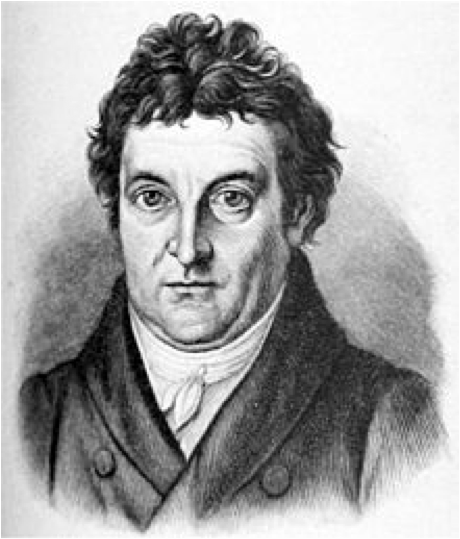
Johann Gottlieb Fichte ( 19 May 1762 – 27 January 1814) was a German philosopher.
He was one of the founding figures of the philosophical movement known as German idealism, a movement that developed from the theoretical and ethical writings of Immanuel Kant. Fichte is often perceived as a figure whose philosophy forms a bridge between the ideas of Kant and the German Idealist Georg Wilhelm Friedrich Hegel. Recently, philosophers and scholars have begun to appreciate Fichte as an important philosopher in his own right due to his original insights into the nature of self-consciousness or self-awareness. Like Descartes and Kant before him, he was motivated by the problem of subjectivity and consciousness. Fichte also wrote political philosophy and is considered one of the fathers of German nationalism.
In cooperation with Simon Kennerley, 2011 (revised 2014).
www.hudtwalcker.com 2014
